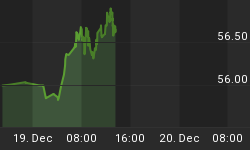"The country is ranked second in the world in gold reserves, third in copper, and sixth in chromite; but mining has dropped from 26% of export earnings 20 years ago to only 6% today. And not because the Philippine economy has boomed; its been the worst in East Asia for decades. Copper production, for instance, has dropped 40% since 1981." - Doug Casey, International Speculator
The resource rich country is an upcoming significant player in the supply dynamics of gold and other industrial metals. Despite the abundance of its natural resources, the mining industry remains moribund largely due to the depressed commodity prices that plagues the industry for more than a decade, aside from other factors such as taxes and regulation, environmental concerns, as well as other usual developing country ailments as lack of infrastructure, corruption, peace and order and political stability. However, while the government has been working hard to revive the industry, gold's renaissance has not yet flowed into the revival of the industry itself, as evidenced by the lackadaisical movements of the prices of the mining companies, as signified by the mining index.
The market capitalization of the entire Philippine Stock Exchange is only about US$ 21.8 billion making it one of the smallest stock markets in the world. Its 30-company benchmark composite index, the Phisix, has a market capitalization of US$16.8 billion while the mining index comprising of a piddling 6 companies is capitalized at $112.5 million only. Its 2002 GDP to market capitalization (P55 to a $US) is at 29%.
Moreover, of late, the Phisix have joined the growth in global equity markets arising from the endless stream of money supplies brought about by the loosening of the monetary spigot by the world's central banks. According to Mr. William Pesek Jr., Asian analyst for Bloomberg, "The MSCI Asia Pacific Index, a regional benchmark, is up more than 27% this year. The Thai Shares alone are up over 68% in US dollar terms. Indonesia shares are up 45%, while the Philippine Stocks are up 25%."
Overseas investors or portfolio flows comprise a significant share of the traded volume during the latest run-up which begun during the latter portion of May of this year. Since June, despite the political stresses hounding the government, overseas investors plunked in more than $ 95 million in equity assets acquisitions; however, most of these purchases were with seen in the index heavyweights, with hardly a smidgen for mining issues.
While it is understandable for money flows to be directed to emerging markets due the several factors, as enumerated by BCA Research, such as rapidly improving economic fundamentals, short-term interest rates below dividend yields, cheap currency, stimulative monetary policies and inexpensive equity assets. The prospects of a continuing rise in commodity prices due to the tightening of supplies and possibly in combination with mounting demand from the rapidly expanding China and India, or from the steep fall of the US dollar, should highlight the potentials of mining and resource based companies in our region too.
Compared to mid-November 2001 prices, London's second fix spot gold prices as of September 23, 2003, grew 39.63% while major mining global indices had remarkable returns as the HUI 232.64%, Australian Gold Index 186.08%, SA Gold Index 183.58%, GOX 109.27%, XAU 87.54%, while only the Canadian S&P/TSE Gold Index grew a measly 51.74% close to the Philippine Mining Index's 33.46%.
As Dr. Marc Faber points out, "it is important to understand that the emerging economies of today are the lowest-cost producers in practically every sector of the global economy." Since the Philippines hold one of the largest reserves of gold and other industrial metals could it be that these investors, whom have been buying into our market, have overlooked the potentials from the industry's viewpoint?















